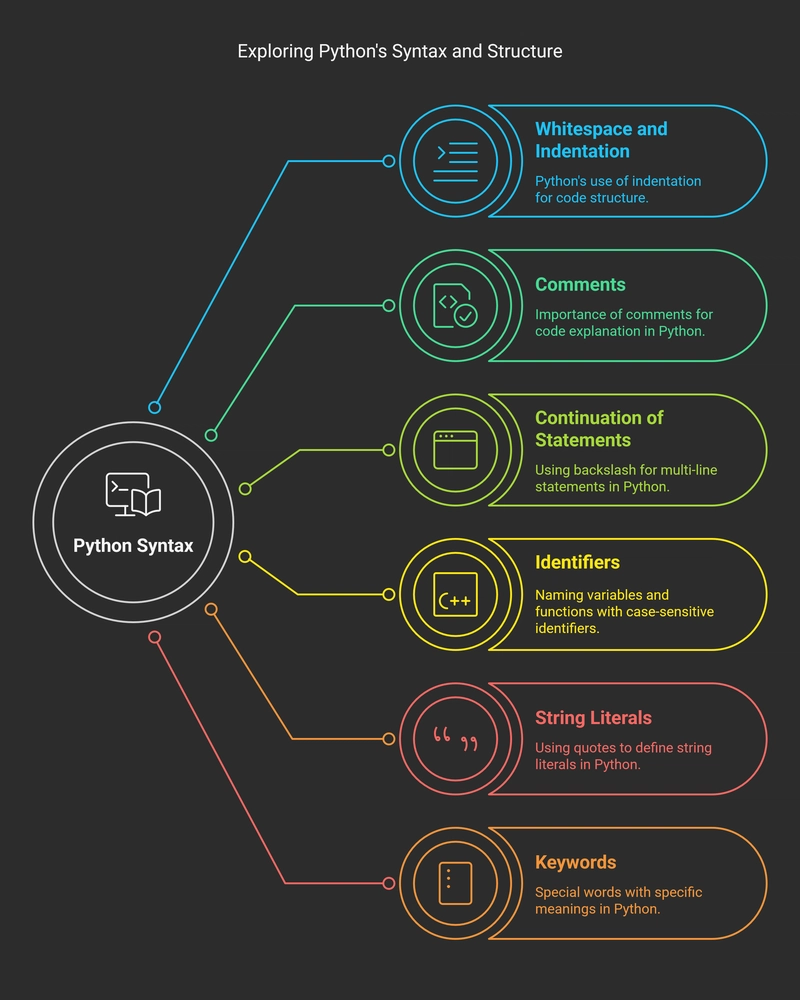Python is beloved for its clean, readable syntax 📖, making it an ideal choice for both beginners 👶 and experienced developers 💻. Understanding the core elements of Python's structure is key 🔑 to writing efficient and maintainable code. Let’s break down the essentials in a way that’s easy to follow 👣 and apply! 🚀
1. Indentation: The Backbone of Python 📏
Unlike many other languages, Python uses indentation (4 spaces by default) to define blocks of code 🧩. For example, in if statements or loops, indentation tells Python where the block begins and ends. No curly braces {} here—just clean, structured formatting! 🌟
Example:
if x > 0:
print("Positive number! ✅")
2. Comments: Document Your Code 💬
Comments are crucial for explaining your logic 🤔. Use # for single-line comments and triple quotes (""") for multi-line explanations 📝
Example:
# This is a single-line comment 📌
"""
This is a multi-line comment 📜.
Useful for detailed explanations! 💡
"""
"""
3. Line Continuation: Keep It Clean ⚡
For long lines of code, use a backslash \ to continue onto the next line ↩️. This ensures readability while adhering to Python’s style guidelines ✨.
Example:
result = 1 + 2 + \
3 + 4 + \
5 + 6 # Clean and concise! 🧹
4. Identifiers: Naming Matters 🏷️
Identifiers are names for variables, functions, and more 📛. They’re case-sensitive and must follow specific rules:
Start with a letter or underscore (_).
Avoid starting with digits 🔢.
Example:
my_variable = 10 # Clear and meaningful! ✨
anotherVariable = "Hello" # Easy to understand! 💬
- 5. String Literals: Handling Text Like a Pro 💬
Strings can be enclosed in single ', double ", or triple """ quotes for multi-line text 📄.
Example:
greeting = "Hello, World! 🌍"
multi_line = """
This is a multi-line string 🪄.
Perfect for longer text! ✍️
"""
6. Keywords: Reserved for Control 🔑
Python has reserved keywords like if, else, for, while, and def. These form the foundation of Python’s control structures 🧱 and cannot be used as variable names.
Example:
def greet():
print("Hello! 👋")
Why Does This Matter? 🤔
Understanding these core concepts ensures your Python code is clean 🧼, functional 💪, and easy to read 👓. Whether you're a beginner or refining your skills 🔧, mastering these basics will set you up for success 🎯.
📌 Liked this article? Save it for later or share it with your fellow coders!



Top comments (0)